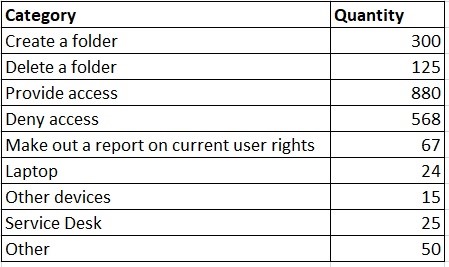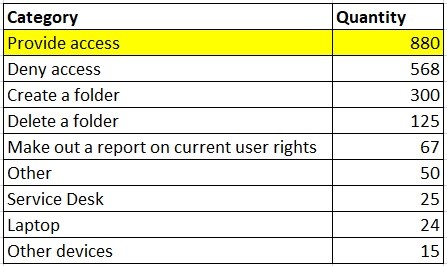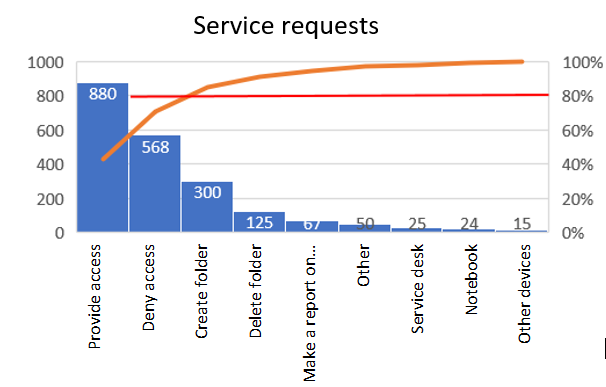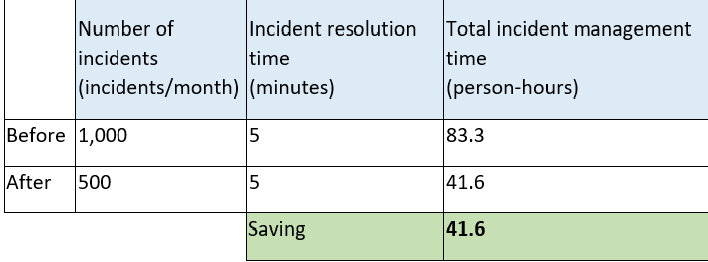News
20 October 2021
News
Готово!
Скоро материал придет на указанную электронную почту. Также подписывайте на нас в Facebook
Ok
The 7 Pillars of Lean practices: the experience of ICL Services
Every year, more and more information technologies emerge and the number of ways to manage business processes grows accordingly. Services are constantly becoming more and more complex and people can hardly be surprised anymore: drones are delivering groceries while car-sharing and autonomous vehicles are becoming increasingly common sights on the streets of major cities. In reality, though, the more companies offer, the more customers demand: more and more customers are talking about the need to modernise and innovate services that have already been provided.
It’s vital that IT service companies learn the art of adapting to the changing reality by getting feedback from customers and providing top-notch services while keeping track of economic performance. In order to boost flexibility and efficiency, companies are constantly on the lookout for new management methodologies, digital solutions and frameworks for their business process.
It’s vital that IT service companies learn the art of adapting to the changing reality by getting feedback from customers and providing top-notch services while keeping track of economic performance. In order to boost flexibility and efficiency, companies are constantly on the lookout for new management methodologies, digital solutions and frameworks for their business process.
One such methodology is lean manufacturing, which focuses on goal setting and the creation of value for the customer while ensuring continuous improvement of the quality of service and minimisation of risks and waste. As an IT outsourcing company, ICL Services has adopted the following Lean principles for the provision of a full range of IT services to its clients:
1. Employee engagement in the company’s efforts to continuously optimise processes and the creation of an environment of trust and transparency. Under these conditions, management is deeply engaged in comprehensive improvement efforts while goals are set within each team in accordance with customer requirements.
2. Experience-based learning within a team through case studies and the sharing of practical experience. Recognition of personal success and an emphasis on learning from errors.
3. Standardisation, documentation of the most optimal method with a view to maintaining performance at least at the current level.
4. Recognition of the customer requirements and selecting team performance indicators that are aligned with them. Efforts should be made to promote among employees an understanding of the value they create for the customer.
5. Visualisation with an emphasis on the aspects of the service that are key to the customer. Visual presentation of the outcomes of teamwork and timely identification of deviations from the standard.
6. Eliminating the waste of time and resources. Increasing customer satisfaction by eliminating superfluous steps in business processes and cutting costs.
7. Re-engineering business processes. Focus on the performance indicators that the team is responsible for. Emphasis on the link between what customers want and the outcomes from what the team does.
It is fairly obvious that using these principles in day-to-day work allows the company to strengthen its culture of continuous improvement. Let’s consider three scenarios of how Lean practices can be applied and use real-life cases to describe what steps would be taken and in what kind of outcomes the process would result.
There are some constants in all the scenarios. These include:
1) the company has first- or second-line tech support in place;
2) the company has an ITSM system that can export support ticket statistics.
It’s important to stress that the examples we look at here come from the IT services domain, however, the most important lessons offered in this article can be used in any kind of business.
How do we go about achieving this goal: use visualisation at work, get every team member engaged with the process and measure the results that are achieved.
Steps:
1. Prepare statistics for support tickets, categorise and sort data for the number of support requests in each category.
2. Get the team to optimise how they tackle the categories for which the largest number of support requests are received.
3. Write down any ideas and conclusions that emerged during the brainstorming session, publish them somewhere the entire team can access and track their subsequent implementation.
Example:


1. Export data from ITSM into a spreadsheet 2. Categorise requests

3. Sort the categories by number of requests. The grant access category is in the first place. Conclude that this is the category in which we need to start optimising.

4. Using an identical table in the form of a Pareto chart, we can easily identify the 20% of request categories that produce 80% of the work. Focus on the Grant Access and Block Access categories.
Outcomes:
- we get optimisation priorities;
- we know the requests that can be passed on to the first line support team. If this step is implemented, the team will get rid of a portion of routine operations and free up time for other tasks;
- we find new areas for optimisation;
- we expedite the business process by using visualisation in the form of charts and tables.
The implemented case: optimisation of incoming requests
While analysing incoming requests, our technicians identified that the leading category was Other. The team analysed the content of the requests in detail to try and find out why so many support requests ended up in this category. To optimise time expenditure, instructions were developed for the first line support engineers on how to handle support tickets without getting second-line support involved. The Other category was reduced by 85%, thereby significantly reducing the work time technicians spend on handling and closing support tickets.
How do we go about achieving this goal: learn from experience and measure the results.
Steps:
1. Gather incident statistics and determine the most popular category.
2. Identify what actions should be taken to eliminate the category as a whole or to reduce the number of incidents.
3. If no solution can be found to reduce the number of incidents, hold a problem resolution session to discuss the situation.
4. Write down the ideas and conclusions and break them down into specific tasks, deciding who’s going to be doing what. Track the progress of every task and measure the number of incidents. An effective solution is a key to reducing incidents.
Outcomes:
- we free up time to deal with other issues by reducing the number of incidents;
- we prevent potential incidents by identifying their causes, and that generates positive user feedback;
- we get more technicians engaged in the efforts to optimise the support-ticket-handling process.
Teamwork is key to boosting performance.
The implemented case: reduced amount of routine work
The second-line support team analysed the stack of monitoring incidents. The most popular ones include:е
1. High CPU load — 600 incidents per month.
2. High memory usage — 350 incidents per month.
3. Low disk space — 50 incidents per month.
It takes about 5 minutes on average to process one support ticket in each of the categories presented. The team then started looking for the root causes of the incidents: a script was developed that eventually tracked down the process that was overloading the CPU and hogging memory during off-hours. In the end, for 3 months, the number of incidents in the categories presented was halved and the team freed up 40 work hours per month.

How do we go about achieving this goal: eliminate waste, standardise, understand the customer's needs.
Steps:
1. Gather statistics.
2. Where the number of support tickets cannot be reduced, the focus should be shifted to optimising how they are processed. One option here is to analyse how each support ticket gets processed. For example, the process of granting access to work folders can be analysed to identify possible waste and find answers to the questions that get asked most often.
3. Standards should be developed to describe the most effective way to handle support tickets.
Outcomes:
- we identify wasteful steps and reduce the time we spend completing them;
- we find ways to scale up operations by moving ticket handling from one support line to another or by making use of online services to process support tickets;
- we optimise teamwork by standardising the support ticket handling process;
- we identify growth areas in the support ticket handling process for support tickets that are not included in the list of services the company offers at the moment. For example, these can include support tickets grouped in a separate category that could be included in the scope of delivery under the contract.
The implemented case: new opportunities to provide services.
The number of support requests submitted over the phone and registered by the first line tech support team turned out to be less than the number of phone calls fielded. Apparently, not all support requests are covered by the service. Analysis of all the phone calls received allowed us to identify popular new categories of requests that were not included in the original contract in effect. We discussed the issue with the customer regarding the inclusion of the new categories in the scope of the service.
Thus, based on the current terms and conditions of the contract, only registered requests were billed and the project’s margin increased by 8%. In turn, the users received an optimised service: their support requests were now handled along with all the incoming messages.
A large range of tools can be used in these scenarios such as Excel, Power BI dashboards as well as various software systems for machine learning-powered analysis of quantitative indicators, etc. At the same time, it’s important to bear in mind the vital principles outlined in this article that allow the effect to be maximised:
1. Visualisation of teamwork: correctly designed charts help people better understand the current performance of the team and identify the ideal areas for optimisation.
2. Understanding customer needs: identifying the factors that create value for the customer and those that expend excess resources.
3. Engagement of all team members to track the process and its outcomes, learn lessons and standardise processes.
1. Employee engagement in the company’s efforts to continuously optimise processes and the creation of an environment of trust and transparency. Under these conditions, management is deeply engaged in comprehensive improvement efforts while goals are set within each team in accordance with customer requirements.
2. Experience-based learning within a team through case studies and the sharing of practical experience. Recognition of personal success and an emphasis on learning from errors.
3. Standardisation, documentation of the most optimal method with a view to maintaining performance at least at the current level.
4. Recognition of the customer requirements and selecting team performance indicators that are aligned with them. Efforts should be made to promote among employees an understanding of the value they create for the customer.
5. Visualisation with an emphasis on the aspects of the service that are key to the customer. Visual presentation of the outcomes of teamwork and timely identification of deviations from the standard.
6. Eliminating the waste of time and resources. Increasing customer satisfaction by eliminating superfluous steps in business processes and cutting costs.
7. Re-engineering business processes. Focus on the performance indicators that the team is responsible for. Emphasis on the link between what customers want and the outcomes from what the team does.
It is fairly obvious that using these principles in day-to-day work allows the company to strengthen its culture of continuous improvement. Let’s consider three scenarios of how Lean practices can be applied and use real-life cases to describe what steps would be taken and in what kind of outcomes the process would result.
There are some constants in all the scenarios. These include:
1) the company has first- or second-line tech support in place;
2) the company has an ITSM system that can export support ticket statistics.
It’s important to stress that the examples we look at here come from the IT services domain, however, the most important lessons offered in this article can be used in any kind of business.
Scenario 1: reducing the number of routine operations.
Goal: support requests received by the second-line tech support team result in an increase in the routine operations and tasks tackled by technicians. Support technicians end up spending a significant amount of time tackling these tasks so it's important that these processes should be optimised.How do we go about achieving this goal: use visualisation at work, get every team member engaged with the process and measure the results that are achieved.
Steps:
1. Prepare statistics for support tickets, categorise and sort data for the number of support requests in each category.
2. Get the team to optimise how they tackle the categories for which the largest number of support requests are received.
3. Write down any ideas and conclusions that emerged during the brainstorming session, publish them somewhere the entire team can access and track their subsequent implementation.
Example:


1. Export data from ITSM into a spreadsheet 2. Categorise requests

3. Sort the categories by number of requests. The grant access category is in the first place. Conclude that this is the category in which we need to start optimising.

4. Using an identical table in the form of a Pareto chart, we can easily identify the 20% of request categories that produce 80% of the work. Focus on the Grant Access and Block Access categories.
Outcomes:
- we get optimisation priorities;
- we know the requests that can be passed on to the first line support team. If this step is implemented, the team will get rid of a portion of routine operations and free up time for other tasks;
- we find new areas for optimisation;
- we expedite the business process by using visualisation in the form of charts and tables.
The implemented case: optimisation of incoming requests
While analysing incoming requests, our technicians identified that the leading category was Other. The team analysed the content of the requests in detail to try and find out why so many support requests ended up in this category. To optimise time expenditure, instructions were developed for the first line support engineers on how to handle support tickets without getting second-line support involved. The Other category was reduced by 85%, thereby significantly reducing the work time technicians spend on handling and closing support tickets.
Scenario 2: Improving the quality of service
Goal: the bulk of support requests on both the first and second lines are comprised of incidents. The goal is to establish their causes and set up a process for eliminating them.How do we go about achieving this goal: learn from experience and measure the results.
Steps:
1. Gather incident statistics and determine the most popular category.
2. Identify what actions should be taken to eliminate the category as a whole or to reduce the number of incidents.
3. If no solution can be found to reduce the number of incidents, hold a problem resolution session to discuss the situation.
4. Write down the ideas and conclusions and break them down into specific tasks, deciding who’s going to be doing what. Track the progress of every task and measure the number of incidents. An effective solution is a key to reducing incidents.
Outcomes:
- we free up time to deal with other issues by reducing the number of incidents;
- we prevent potential incidents by identifying their causes, and that generates positive user feedback;
- we get more technicians engaged in the efforts to optimise the support-ticket-handling process.
Teamwork is key to boosting performance.
The implemented case: reduced amount of routine work
The second-line support team analysed the stack of monitoring incidents. The most popular ones include:е
1. High CPU load — 600 incidents per month.
2. High memory usage — 350 incidents per month.
3. Low disk space — 50 incidents per month.
It takes about 5 minutes on average to process one support ticket in each of the categories presented. The team then started looking for the root causes of the incidents: a script was developed that eventually tracked down the process that was overloading the CPU and hogging memory during off-hours. In the end, for 3 months, the number of incidents in the categories presented was halved and the team freed up 40 work hours per month.

Scenario 3: Do more for the customer
Goal: resolving incidents and support tickets take a lot of time. The process needs optimisation.How do we go about achieving this goal: eliminate waste, standardise, understand the customer's needs.
Steps:
1. Gather statistics.
2. Where the number of support tickets cannot be reduced, the focus should be shifted to optimising how they are processed. One option here is to analyse how each support ticket gets processed. For example, the process of granting access to work folders can be analysed to identify possible waste and find answers to the questions that get asked most often.
3. Standards should be developed to describe the most effective way to handle support tickets.
Outcomes:
- we identify wasteful steps and reduce the time we spend completing them;
- we find ways to scale up operations by moving ticket handling from one support line to another or by making use of online services to process support tickets;
- we optimise teamwork by standardising the support ticket handling process;
- we identify growth areas in the support ticket handling process for support tickets that are not included in the list of services the company offers at the moment. For example, these can include support tickets grouped in a separate category that could be included in the scope of delivery under the contract.
The implemented case: new opportunities to provide services.
The number of support requests submitted over the phone and registered by the first line tech support team turned out to be less than the number of phone calls fielded. Apparently, not all support requests are covered by the service. Analysis of all the phone calls received allowed us to identify popular new categories of requests that were not included in the original contract in effect. We discussed the issue with the customer regarding the inclusion of the new categories in the scope of the service.
Thus, based on the current terms and conditions of the contract, only registered requests were billed and the project’s margin increased by 8%. In turn, the users received an optimised service: their support requests were now handled along with all the incoming messages.
Conclusion
The scenarios we’ve identified demonstrate how lean practices can significantly improve and standardise the way that tech support tickets are handled, optimise the service and its performance indicators (time, financial etc.), and identify the potential for more services to be provided under an existing project.A large range of tools can be used in these scenarios such as Excel, Power BI dashboards as well as various software systems for machine learning-powered analysis of quantitative indicators, etc. At the same time, it’s important to bear in mind the vital principles outlined in this article that allow the effect to be maximised:
1. Visualisation of teamwork: correctly designed charts help people better understand the current performance of the team and identify the ideal areas for optimisation.
2. Understanding customer needs: identifying the factors that create value for the customer and those that expend excess resources.
3. Engagement of all team members to track the process and its outcomes, learn lessons and standardise processes.
Related news
- 19 February
Company experts provide comments on Service Desk and cloud technologies.
Stay informed
Subscribe to our newsletter and keep up with our latest news
Contact us
Leave information about yourself and your company to get a detailed presentation.

